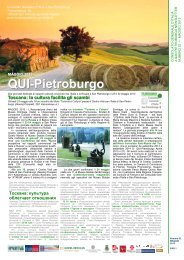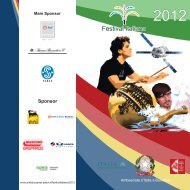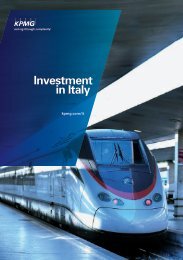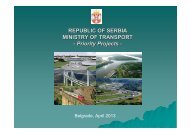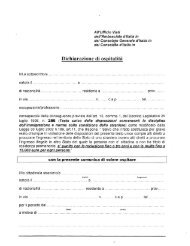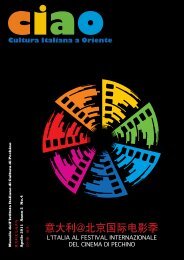Innovation Canada: A Call to Action
Innovation Canada: A Call to Action
Innovation Canada: A Call to Action
Create successful ePaper yourself
Turn your PDF publications into a flip-book with our unique Google optimized e-Paper software.
<strong>Innovation</strong> <strong>Canada</strong>: A <strong>Call</strong> <strong>to</strong> <strong>Action</strong>Figure 3.2 The Largest Direct Expenditure Programs in the Envelope, 2010–1118%16%14%12%10%8%6%4%2%0%Largest 5 programs: 40%of expendituresLargest 15 programs(shown at right): 72%Industrial Research Assistance Program (NRC)Strategic Aerospace and Defence Initiative (IC)Support for FP<strong>Innovation</strong>s (NRCan)Networks of Centres of Excellence (Tri-Council)SD Tech Fund (SDTC)Western Diversification Program (WD)Atlantic <strong>Innovation</strong> Fund (ACOA)Strategic Project Grants (NSERC)Collaborative Research and Development Grants (NSERC)Business and Regional Growth Program (CED-Q)Centres of Excellence for Commercialization and Research (Tri-Council)Industrial Materials Institute (NRC)Strategic Network Grants (NSERC)Agricultural Bioproducts <strong>Innovation</strong> Program (AAFC)Institute for Aerospace Research (NRC)0% 2% 4% 6% 8% 10% 12% 14% 16% 18%Source: Based on figures provided by departments and agencies.Envelope Expenditure by Form of SupportThe SR&ED tax credit is by far the largestprogram of federal support for business R&D,projected <strong>to</strong> comprise about 70 percent ofenvelope expenditure (Figure 3.3).In the category of direct expenditure, nonrepayablegrant and contribution programsmake up the largest proportion — $901 millionin 2010–11, or 60 percent of the directexpenditure category. IRAP is by far the largest,with 2010–11 expenditure of $237.3 million,although it should be noted that this reflects asubstantial two-year increase in budget as par<strong>to</strong>f the government’s stimulus program. (IRAPexpenditure in each of 2007–08 and 2008–09was about $86 million, or only a little more thana third of its 2010–11 budget, and about8–9 percent of direct expenditure in thoseyears.) There is a <strong>to</strong>tal of 29 programs orprogram components in the non-repayablegrant and contribution group.Programs providing repayable contributions aresmaller — $248.7 million in 2010–11, or about17 percent of direct spending. The StrategicAerospace and Defence Initiative (SADI) is thelargest of these programs, with 2010–11expenditure of $112.7 million, although thisannual amount will rise substantially as theprogram ramps up. There are seven programs inthis group, with the remaining <strong>to</strong>tal largelydelivered by the regional development agencies(see Figure 3.1).Envelope Expenditure by Type of RecipientFigure 3.4 breaks down <strong>to</strong>tal expenditure byrecipient and shows that 81 percent is projected<strong>to</strong> go <strong>to</strong> businesses, with the great majoritymade available through the SR&ED program.Much of the direct support for large businessesis repayable. The allocation of expenditure fromdirect programs in 2010–11 was roughly asfollows: 11 percent <strong>to</strong> large businesses,26 percent <strong>to</strong> small businesses, 27 percent <strong>to</strong>3-8



